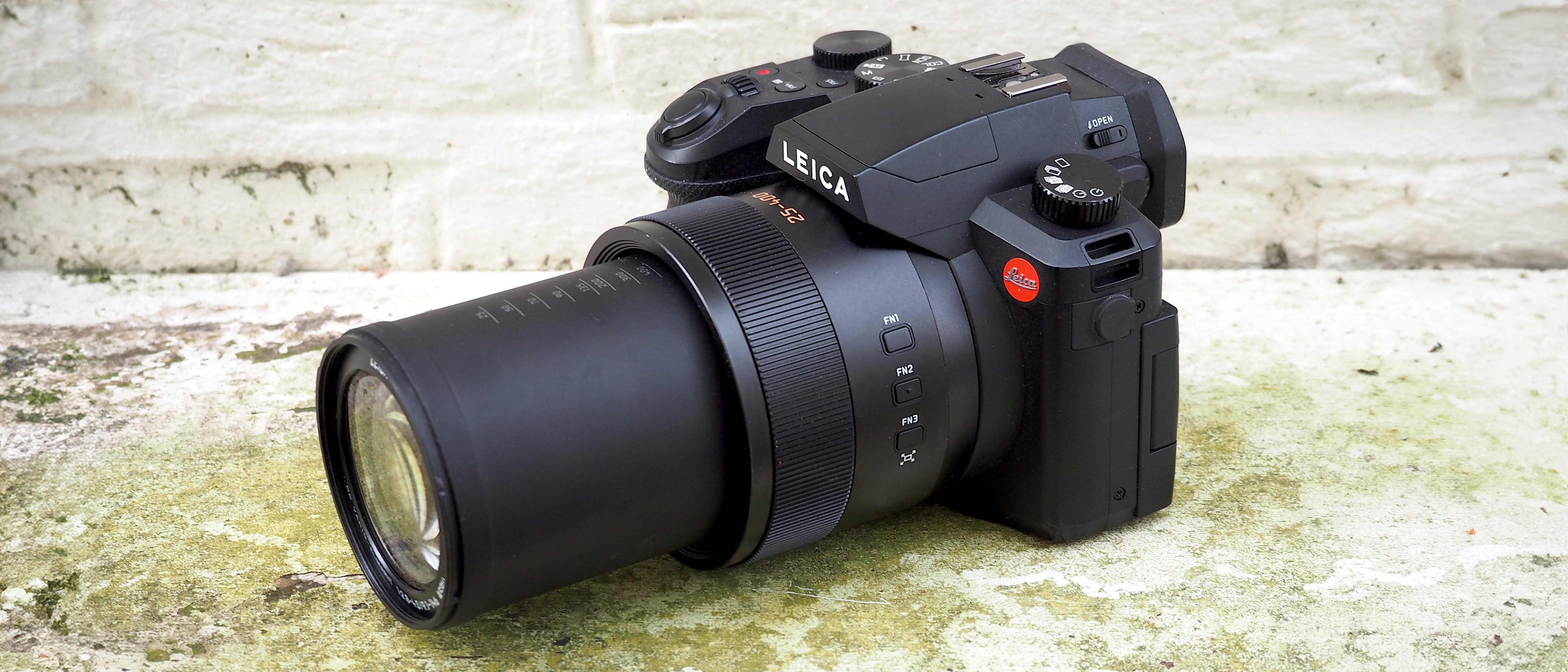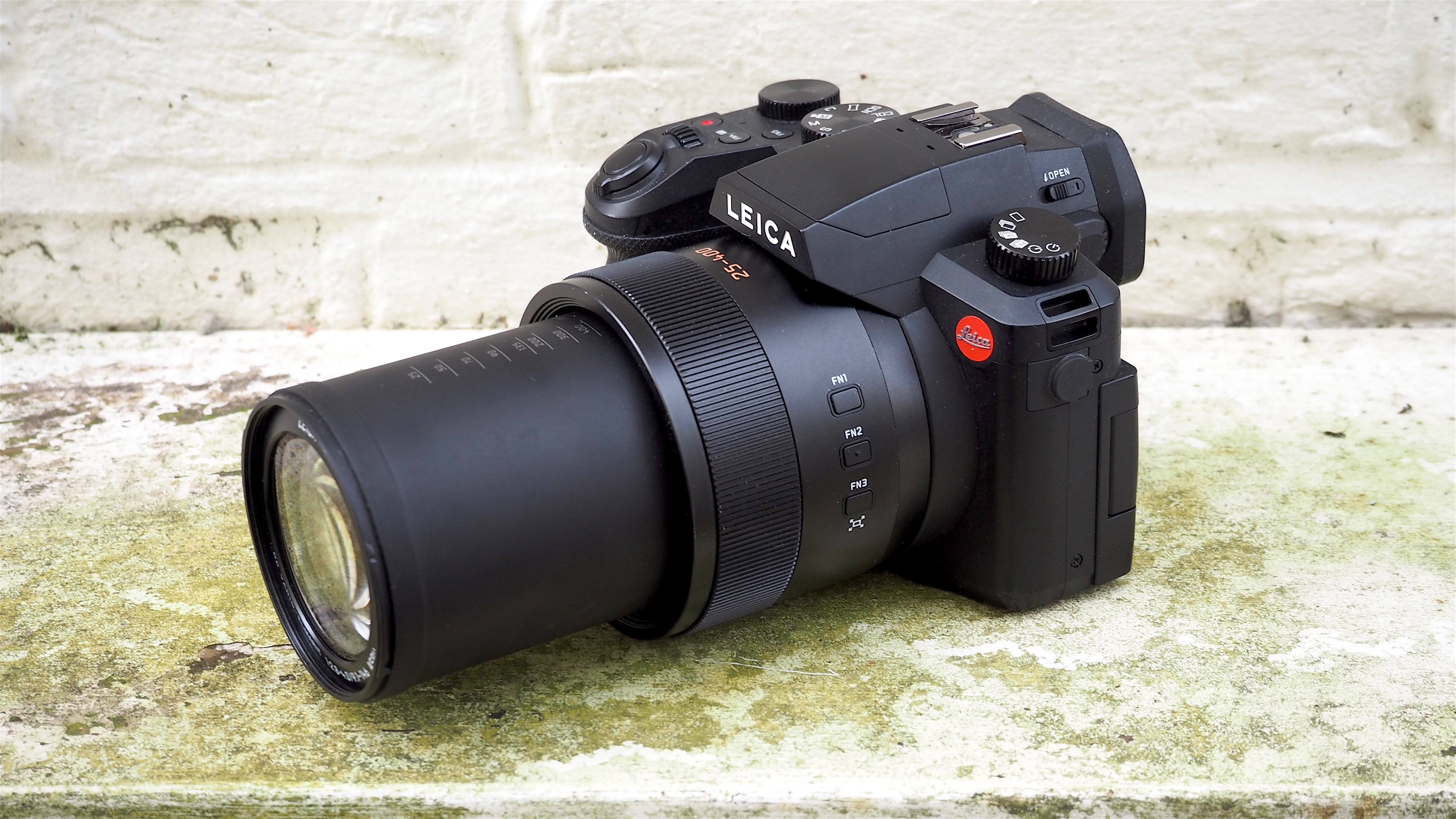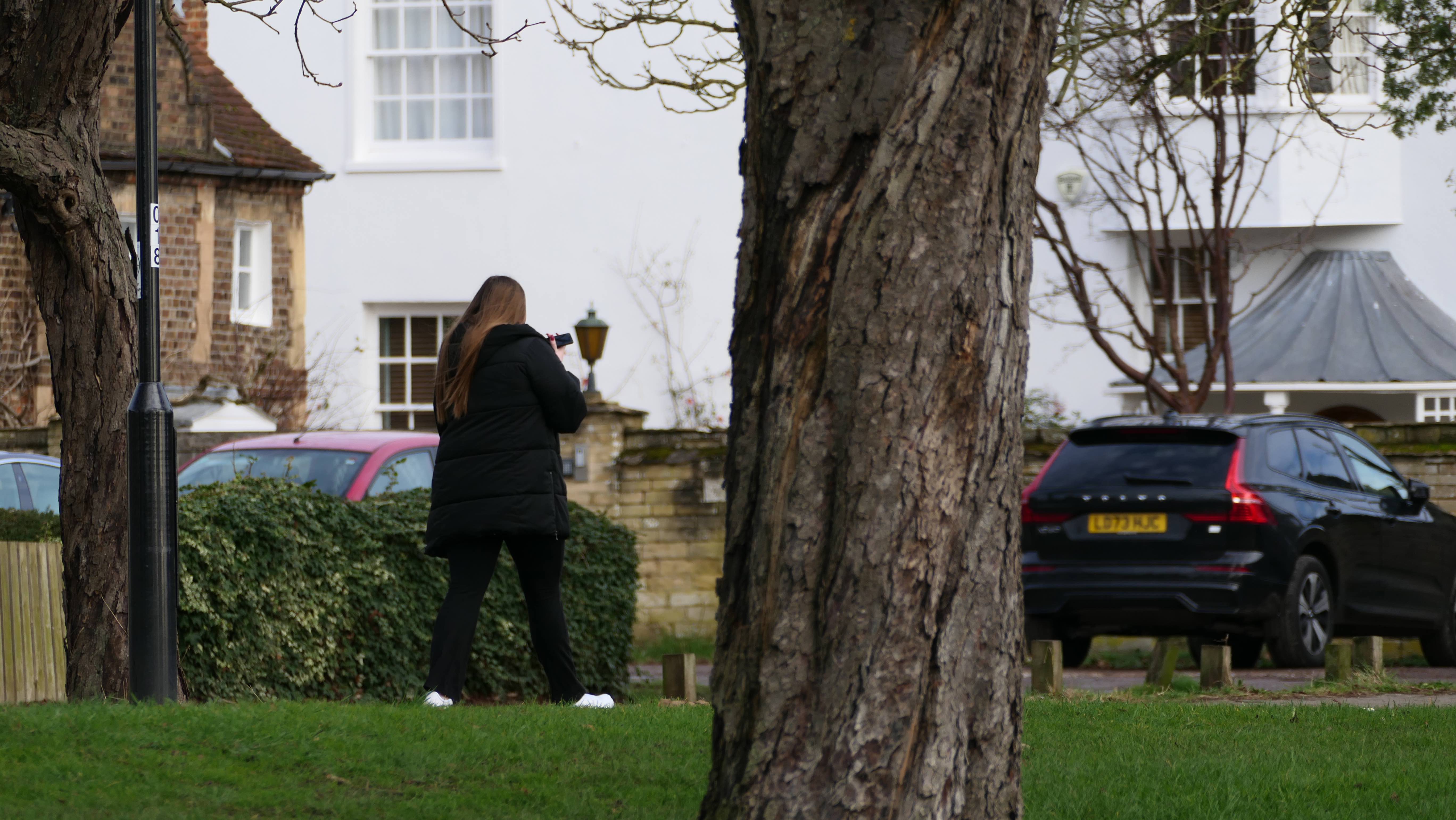Digital Camera World Verdict
Sharing many core qualities with the less expensive Panasonic Lumix FZ1000 and its Mark II successor, precisely because of that, the V-Lux 5 is one of the more affordable Leica cameras that we can own. Marrying a one-inch sensor to a 16x optical zoom also makes this a viable alternative to both a premium compact, a DSLR, or a mirrorless camera for someone looking for a single option that does it all, despite necessitating a chunky and weighty build. Still, this Leica’s larger-than-average sensor, generous zoom range, and the ability to capture 4K video makes it a versatile package for anyone who wants DSLR-like operation, but to forego the faff of swapping or expense of owning a bunch of lenses.
Pros
- +
All encompassing 25-400mm lens reach equals versatility
- +
One-inch sensor
- +
One of the most affordable Leica cameras
- +
4K resolution video capture
- +
Tilt and swivel 3-inch touchscreen LCD
Cons
- -
We’re paying a premium for the Leica badge compared to the practically identical Panasonic FZ1000 Mark I & II
- -
Big and bulky because of the lens reach offered
Why you can trust Digital Camera World
Bridge cameras – once so-called because they formed a ‘bridge’ between a compact point-and-shoot and the operability of a fully blown DSLR with telephoto lens – used to be a must-have in the ranges of any self respecting camera manufacturer. And up until around five or 10 years ago, when smaller, lighter mirrorless cameras began to steadily replace DSLRs, they were.
However, nowadays such bridge units, also known as super zooms or all-in-ones, because of their generous lens reach, are pretty thin on the ground and we’re more likely to find one secondhand than new.
Still listed in its manufacturer’s online store, some five years since it was originally announced, is the Leica V-Lux 5.
Even in an era where compact mirrorless cameras and equally compact telephoto lenses are king, we feel cameras like this still have a place. Because, as was the case when bridge cameras were being sold as alternatives to DSLRs, buying a body plus separate lens approaching anything like the 35mm equivalent 25-400mm reach, or 16x optical zoom, offered by Leica here would be much more expensive still.
So what else does the Leica V-Lux 5 offer to deserve a place in today’s camera bags? Read on to find out.
Specifications
Sensor | 20 megapixels |
Sensitivity range | Automatic |
Lens | 25-400mm equivalent (16x optical zoom) |
Monitor | 3-inch tilting touchscreen LCD, 1.24 million dots |
Viewfinder | OLED at 2.36 million dots, 100% field of view |
Battery life | 440 stills or 220 minutes of video |
Dimensions | 5.39 x 3.82 x 5.2 in / 137 x 97 x 132 mm |
Weight | 812g |
Key Features
While the 16x optical zoom is the main selling point for the Leica V-Lux 5, this is married to a 20-megapixel resolution from a larger-than-average one-inch sensor. Images and 4K video are composed and reviewed via an eye-level electronic viewfinder with a life-like 2.36 million dots resolution, and/or a flip-out and rotating 3-inch touch screen LCD, which can be fully turned to face whatever is in front of the lens. The latter monitor still offers a more than respectable 1,240,000 dots of resolution and once again 100% field of view, while the camcorder-like flexibility of how we can angle the screen proves particularly effective for video.
As noted in our intro, this camera offers a Leica Vario-Elmarit 9.1-146mm f/2.8-4 aspherical lens delivering a creatively versatile 25-400mm equivalent reach in 35mm terms, and, as indicated, the brightest aperture setting of f/2.8 at its widest point.
The best camera deals, reviews, product advice, and unmissable photography news, direct to your inbox!
While the top plate buttons here resemble what we’d expect to find on a DSLR, the smaller, inset rear plate buttons more closely resemble those of a mirrorless camera or premium-level compact. So operation will not daunt either category of user.
The camera is powered by a removable lithium-ion battery that can also be charged on-the-fly, while still in the camera, via USB lead. Unfortunately, no mains plug or standalone charger is provided. We found a full charge of the battery takes around 180 minutes, with industry body CIPA confirming that a fully juiced up cell will last for up to 440 stills or 220 minutes of moving footage, which is respectable when compared with the mirrorless camera body we could alternatively buy for a similar outlay.
A vacant hotshoe atop the camera signals that this one is compatible with accessory flash, while a spring-loaded pop-up integral flash is alternatively offered just forward of the EVF and directly above the lens. It would seem therefore that the Leica V-Lux 5 has most bases covered in terms of the sort of feature set we’d expect.
Design & Handling
The design of the Leica V-Lux 5 is chunky and industrial looking, and with that whopper of a lens bolted on the front isn’t actually that much smaller than a beginner-level DSLR, or indeed a premium mirrorless camera body.
Unlike those alternatives, the lens here isn’t removable/swappable, so the fact that we can quickly jump from an ultra-wide angle setting to a super telephoto one with a flick of its zoom lever is a real boon. Top plate mode wheels detailing the shooting modes available, as well as continuous and single shot options, will be familiar to anyone who is more at ease with a DSLR, as will command dials at the front and back of the handgrip. These ergonomically fall under the forefinger or thumb respectively.
Overall the camera feels robust and sturdy in the hand, if a little heavy at just under a kilogram. Like a DSLR or mirrorless camera, this is built for two-handed use, with the left hand encircling and steadying the lens barrel as the right holds the grip and squeezes the forward-angled shutter release button. Fortunately, a shoulder/ neck strap is supplied so we don’t have to carry it around in our hands. Too big to fit into a jacket pocket, a dedicated camera bag or backpack will alternatively be required.
The V-Lux 5’s zoom lens can in fact be operated in a couple of ways. Via a flick of the lever encircling the shutter release button, which will be familiar to most compact camera users already, or via a twist of the ridged ring encircling the lens barrel, which will feel more familiar to anyone who’s owned or used a DSLR or mirrorless alternative. For more precise incremental adjustments we’re better off favoring the use of the lens ring, as an on-screen distance bar is provided along the bottom of the LCD for guidance, in addition to markings on the lens barrel itself, its focusing range stretching from a minimum 30cm to infinity.
In summary the angular, almost brutalist build feels like it would withstand the odd accidental knock in the heat of the action, though we wouldn’t want to drop or knock it when the lens is fully extended and the camera therefore at its most vulnerable.
Performance
With its obvious audience being travel photographers, wildlife watchers, and photo enthusiasts collectively, on the Leica V-Lux 5 we get the ability to shoot Raw files either in preference to, or in tandem with, standard, maximum fine quality JPEGs. If we choose to shoot Raw and JPEG together, rather than just the latter separately, we’re happy to report there’s barely, if any, noticeable slowdown.
While results may not stand up to direct comparison with what is achievable with a full-frame DSLR or mirrorless camera in terms of razor-sharp image quality, it delivers better performance than we could have hoped for in the most challenging low light or nighttime conditions, as long as we have a flat surface onto which to further steady it.
While a maximum f/2.8 aperture might not sound groundbreaking on paper, in practice here it proves sufficient. The 25mm to 400mm is also creatively useful, enabling us to squeeze most subjects into our frame without having to physically shuffle our feet forward or back to achieve the framing we desire. Convenient and versatile, with the V-Lux 5 it’s easy to quickly zoom in and capture the moment before it passes, meaning a greater average hit rate for the photographer using it.
In terms of colors, these are as punchy as we’d expect from a camera this close to Panasonic’s own, and as regards manually selectable light sensitivity settings, it’s only really when we nudge up to ISO12800 that we’re noticeably seeing image degradation, without needing to enlarge areas to actively check for it. Inevitably a huge and versatile zoom range at our fingertips requires a degree of compromise in knowing that a one-inch sensor camera isn’t going to be a match for an APS-C or full-frame DSLR or mirrorless chip. But to give it its due, the Leica V-Lux 5’s quality comes near enough to the former to make it worth our consideration.
Verdict
In being a chunky Leica bridge camera with generous 16x optical zoom equivalent to 25-400mm in 35mmm terms, this ‘super zoom’ is eminently suitable for capturing everything from wide-angle landscapes to wildlife close-ups, slotting the equally common pursuit of portraiture in between.
While some observers may grumble that the V-Lux 5 is basically a re-badged Panasonic Lumix FZ1000 with a higher price tag, others will relish the fact that they can own an all-subjects-encompassing Leica and its covetable red badge without having to survive on soup for the rest of the year.
Alternatives
If you’re checking out the Leica V-Lux 5 then it’s a must to compare and contrast it with Panasonic’s FZ2000 cousins – so close in identity they could almost be the proverbial kissing cousins.
However, like someone sizing up a Rolls-Royce car, if you’re considering a Leica then you probably definitely know that you do want a Leica and are prepared to pay the premium to realize that dream.
Gavin has over 30 years’ experience of writing about photography and television. He is currently the editor of British Photographic Industry News, and previously served as editor of Which Digital Camera and deputy editor of Total Digital Photography.
He has also written for a wide range of publications including T3, BBC Focus, Empire, NME, Radio Times, MacWorld, Computer Active, What Digital Camera and the Rough Guide books.
With his wealth of knowledge, Gavin is well placed to recognize great camera deals and recommend the best products in Digital Camera World’s buying guides. He also writes on a number of specialist subjects including binoculars and monoculars, spotting scopes, microscopes, trail cameras, action cameras, body cameras, filters and cameras straps.













